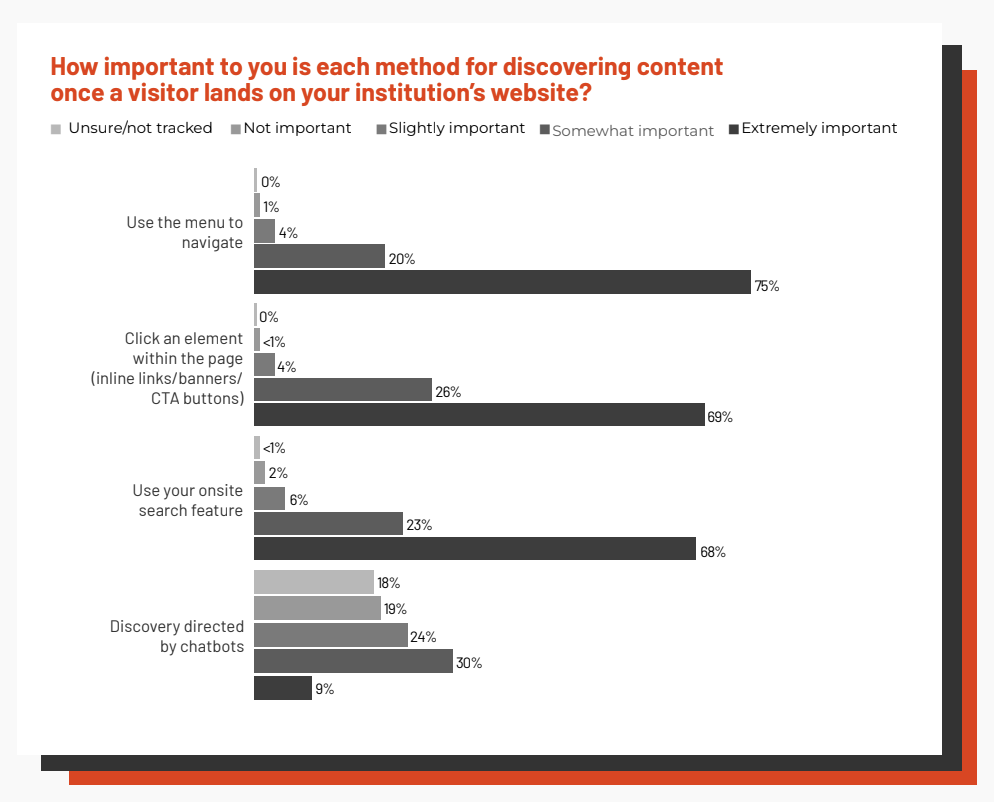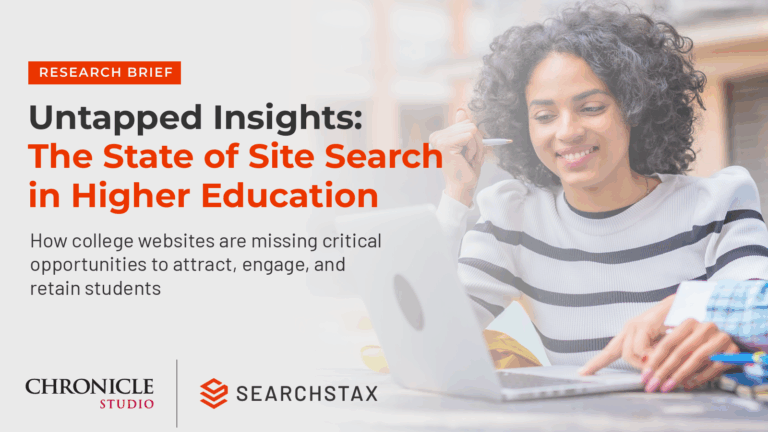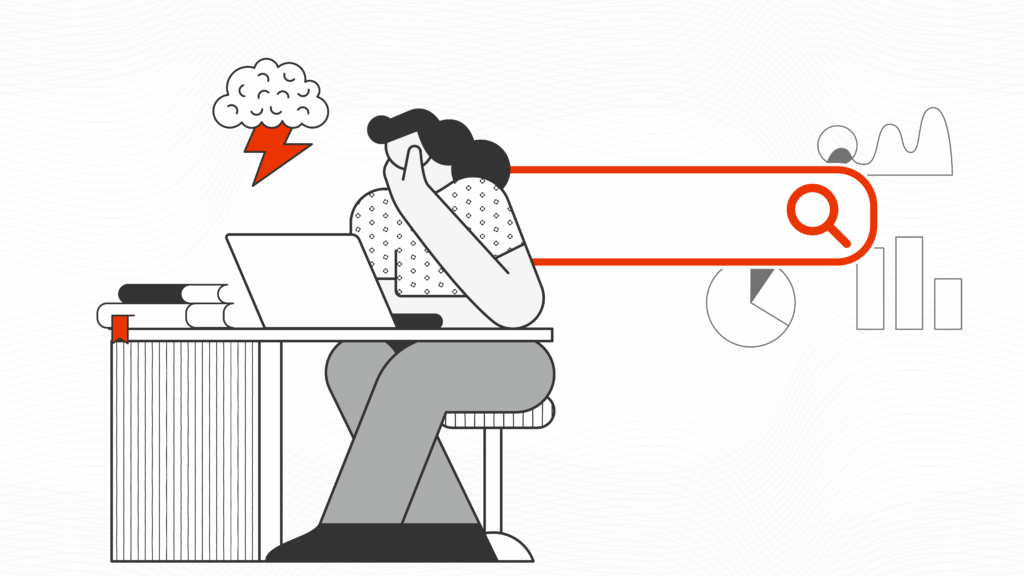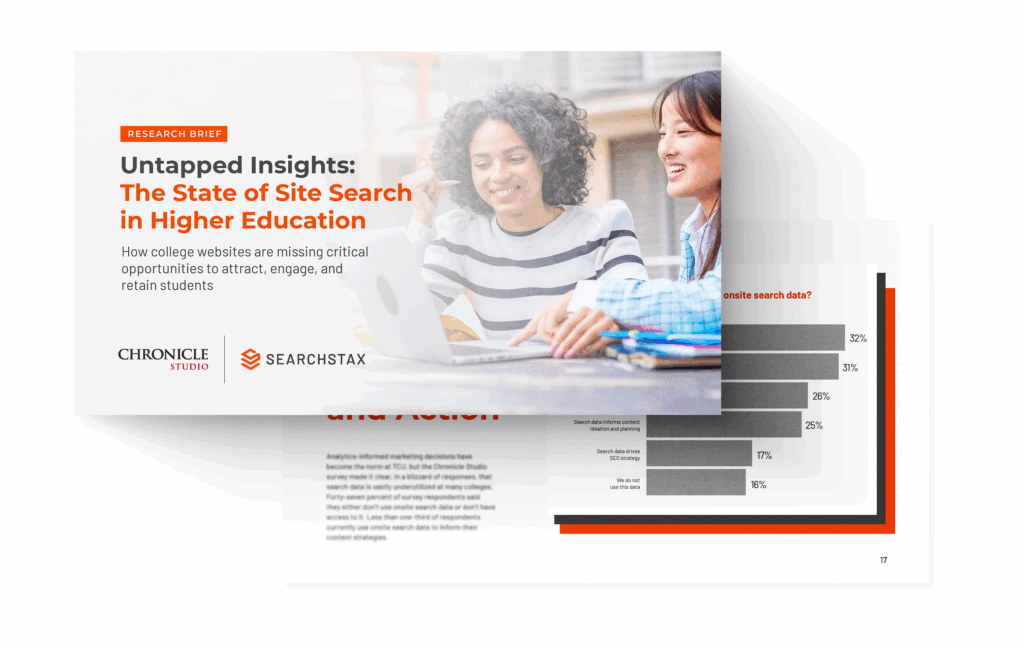May 02, 2025
John Abbasi
|
When it comes to delivering a great website experience, higher ed professionals know what matters.
In our recent survey with The Chronicle of Higher Education, respondents ranked onsite search as one of the top three most important features — right alongside easy navigation and accessibility.
So far, so good.
But here’s the problem:
50% of respondents also admitted their site search frustrates users with irrelevant or outdated results.
That’s not just a tech issue — it’s a trust issue. And in today’s enrollment-challenged environment, it’s one higher ed institutions can’t afford to ignore.
Everyone's Treating Navigation Like It’s 2015
Navigation has long been a staple of web design checklists — and yes, it’s still important. But what many higher ed teams haven’t fully embraced is that visitor behavior has changed. Gen Z doesn’t explore websites like previous generations. They’ve grown up on apps like Netflix, Spotify and TikTok, where search is the default discovery method.
For them, a confusing nav menu isn’t the end of the world — because they’ll go straight to the search bar to find what they need. Or at least, they try to.
That’s why it’s so concerning that higher ed professionals recognize how critical site search is, yet half of them acknowledge their search experience isn’t delivering even on the fundamentals of a search engine.
Visitors are hitting dead ends, missing key content and losing trust in the process.
Every Visitor Counts — Especially Now
With the pressure of the enrollment cliff looming, every single website visit matters more than ever. You can’t afford to let prospective students bounce back to Google or their AI search engine because they couldn’t find the right program page or learn more about campus life on your site.
The student experience starts long before they ever set foot on campus — and often, it starts in your website’s search bar. If that experience feels outdated, confusing or unhelpful, they might not stick around to give your institution another chance.
Search Isn’t Just a Feature — It’s a Strategy
When you treat search as a strategic component of your website — not just a box to check — the benefits ripple outward. Students and families find answers faster. Key content becomes easier to promote. And your team gets a clearer view of what people are actually looking for.
A well-tuned search experience can:
- Guide prospective students to the right programs and deadlines
- Help current students self-serve support and academic resources
- Surface content that would otherwise stay buried in menus or subpages
- Empower marketers to react in real-time to student needs
It’s time to stop overvaluing outdated navigation models and start building experiences that meet visitors where they are — in the search bar.

Want More Insights Like This?
These insights are just a few of many we uncovered in our new report: Untapped Insights: The State of Site Search in Higher Education
We teamed up with The Chronicle of Higher Education to survey over 225 higher ed professionals about:
- Website experience priorities (and where institutions are falling short)
- How teams create and update content in today’s fast-paced environment
- The role of search, content discovery and AI in the future of digital strategy
Get the full story — and see how your peers are tackling the same challenges.






